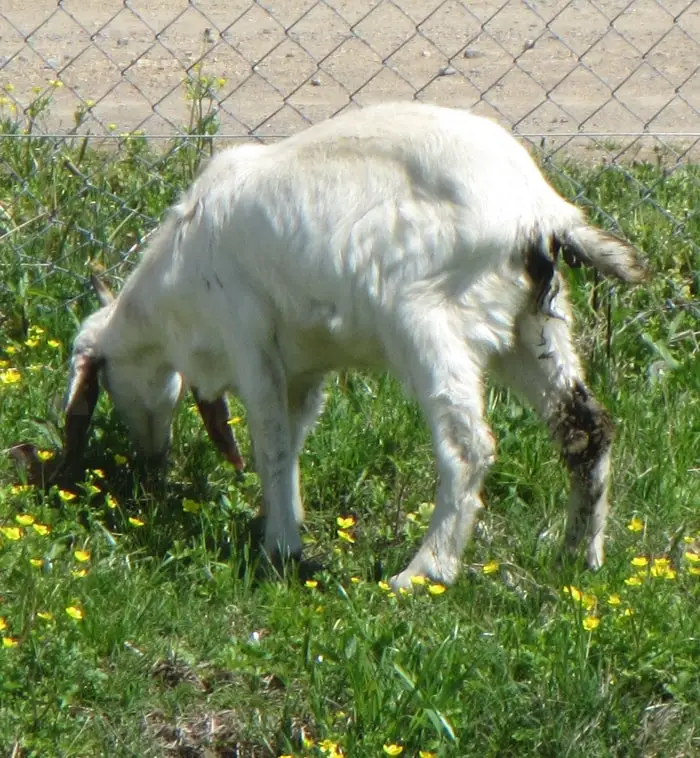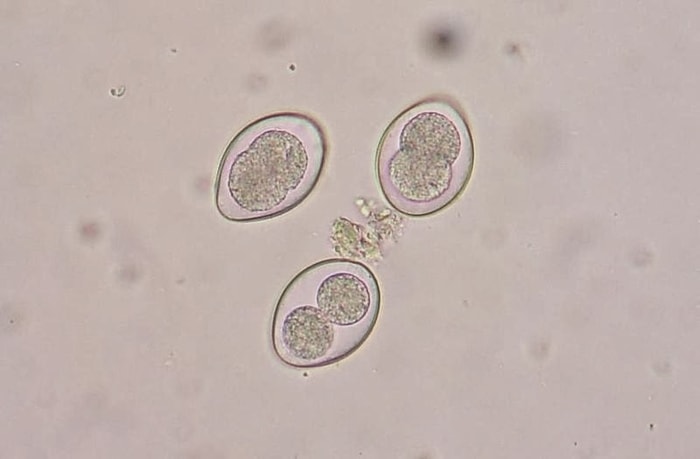Coccidiosis in goats is a highly pathogenic protozoal disease of goats and sheep. The disease is more dangerous in kids than adult goats. Coccidia in goats is caused by several species of Eimeria, which are highly host-specific. The Eimeria protozoa have a critical life cycle and produce a considerable number of eggs (oocytes) in the interstitial cells of the intestine. The oocytes destroy the intestinal lying cells and cause diarrhea, weakness, dehydration, bleeding, and death.
Causes of Goat Coccidiosis
Several species of Eimeria spp cause Coccidia in goats. The most common species are Eimeria arloingi (most pathogenic), E christenseni (most significant), and E ninakohlyakimovae are highly pathogenic and readily available. The organism is particular to the host and never transmits from sheep to goats and vice versa. The other species are:
- Eimeria alijevi.
- Eimeria aspheronica.
- Eimeria jolchijevi.
- Eimeria caprina.
- Eimeria caprovina.
- Eimeria hirci.
- Eimeria gilruthi.
Pathogenesis and Transmission of Coccidiosis in Goats
- Coccidiosis is the common cause of diarrhea in goats, and the organism mostly affects goats between ages three weeks to 5 months.
- Coccidia affects the young goats just after weaning as they are stressed and separated from their mother.
- The coccidia organism typically presents the feces of adult goats and spread in the environment.
- The organism then transforms into an infective form and enters into the new host through feces or contaminated feed, or water.
- A small number of organisms did not produce any disease, and the goat may remain the asymptomatic carrier.
- The organisms produce disease when the number of organisms is more and animals in a stressed condition.

Clinical Signs of Coccidia in Goats
The clinical signs of Eimeria infection in goats are:
- Profuse watery diarrhea.
- The feces have mucous or blood.
- Severe abdominal pain.
- Loss of appetite.
- Low body weight.
- Rough hair coat.
- Death may occur within 24 hours of infection in kids.
Diagnosis Coccidiosis in Goats
The standard diagnostic procedures of Coccidia in goats are:
- History of the previous infection in the same herd.
- Pathognomic clinical signs like diarrhea with mucous and blood.
- Microscopic examination of feces to see the Eimeria oocyst.
- Postmortem examination of the intestine and visceral organs.

Treatment of Coccidiosis in Goats
The disease can be cured by early diagnosis and effective treatment. The treatment strategies that you can follow:
- Oral administration of Anti-protozoal drug Amprolium @ 9.6% for five days.
- Combination of Tri-sulfur drugs (Sulfadiazine, Sulfamethazine, and Sulfadiadine) orally.
- Anti-diarrheal mixture orally.
- Oral or IV administration of normal saline in the case of dehydration.
Prevention and Control of Coccidia in Goats
Prevention is always better than control in coccidiosis. The following measures can prevent the disease:
- Maintain strict hygiene and biosecurity in the herd.
- Apply coccidiostat with goat feed.
- Avoid overcrowding in the goat houses.
- Reduce stress in goat kids.
Final Advice on Coccidiosis in Goats
Coccidia protozoa are generally present in the gut of the goats and pass through feces. The organism spread in the environment through the feces of carrier animals. The organism producing disease in the immunocompromised and undernourished young goats. The disease can be prevented easily by following strict biosecurity measures.